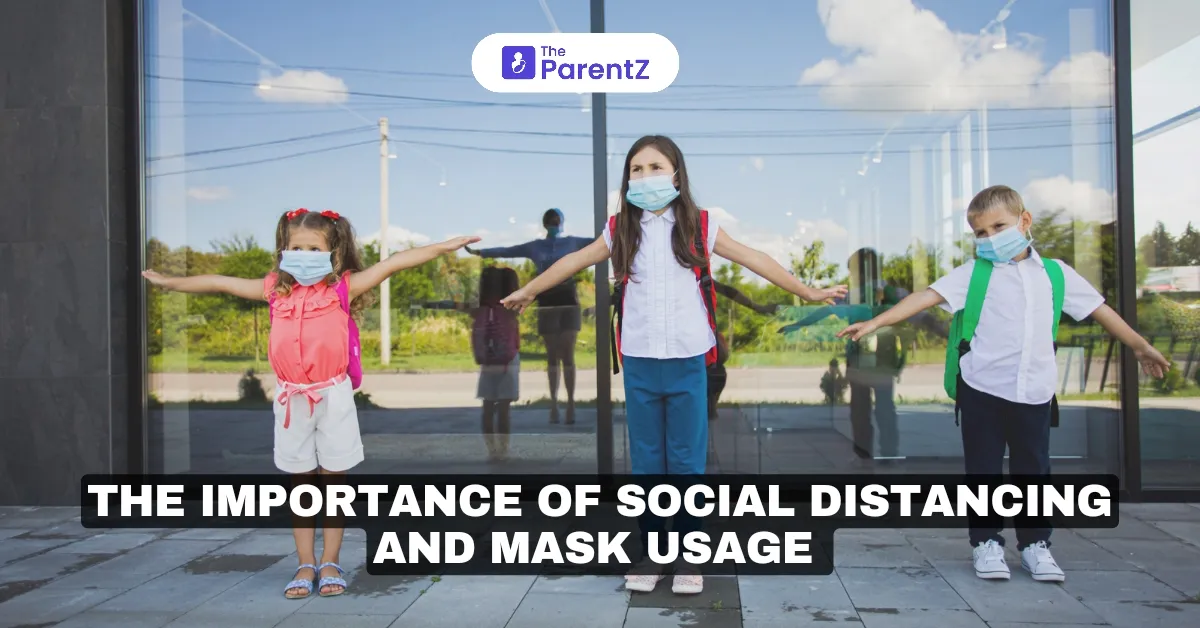In the face of infectious diseases, particularly respiratory illnesses like COVID-19 and influenza, social distancing and mask usage have proven to be vital tools for reducing transmission. These measures are simple yet powerful, providing a collective strategy to protect public health. This article explores the science, effectiveness, and societal impacts of social distancing and mask usage in disease prevention.
Understanding Social Distancing and Mask Usage
What is Social Distancing?
Social distancing involves maintaining physical space between individuals to reduce the risk of disease transmission. Key practices include:
- Keeping a distance of at least 6 feet (2 meters) from others.
- Avoiding crowded spaces.
- Limiting physical gatherings.
What is Mask Usage?
Mask usage refers to wearing face coverings over the nose and mouth to prevent the spread of respiratory droplets. Common types of masks include:
- Cloth masks: Made from washable fabrics, suitable for general use.
- Surgical masks: Disposable masks that provide basic protection.
- N95/KN95 respirators: High-filtration masks designed for healthcare settings and environments with higher exposure risks.
Why These Measures Matter
1. Interrupting Transmission Pathways
Respiratory illnesses spread primarily through droplets and aerosols released during talking, coughing, or sneezing. Masks act as a physical barrier, blocking these particles. Social distancing minimizes close-contact exposure, further reducing the chances of infection.
2. Protecting Vulnerable Populations
Certain groups, such as older adults, individuals with chronic health conditions, and those who are immunocompromised, are at greater risk of severe illness. Social distancing and mask usage create safer environments for these populations.
3. Complementing Vaccination Efforts
While vaccines are highly effective, no vaccine provides 100% protection. Variants of viruses, waning immunity, or vaccine accessibility challenges may leave gaps in defense. Masks and social distancing help bridge these gaps, especially during outbreaks.
Scientific Evidence Supporting These Measures
Social Distancing
Studies show that maintaining physical distance reduces transmission rates. During the COVID-19 pandemic, models demonstrated that strict social distancing measures could flatten the curve, buying time for healthcare systems and vaccine distribution.
Mask Effectiveness
Research supports mask usage as an effective intervention:
- Blocking Respiratory Droplets: Masks reduce the emission of droplets by infected individuals (source control) and protect wearers from inhaling these particles.
- Community Impact: Studies have shown that regions with high mask adherence experienced significantly lower infection rates during pandemics.
Challenges and Misconceptions
Despite their effectiveness, social distancing and mask usage have faced resistance due to various challenges:
- Compliance Fatigue: Prolonged measures can lead to resistance, especially in communities eager to return to normalcy.
- Misinformation: False claims about masks causing health problems or being unnecessary for certain populations undermine public adherence.
- Economic and Social Impacts: Social distancing, particularly lockdowns, can disrupt economies, education, and social interactions.
Addressing Misconceptions
- Masks do not significantly reduce oxygen levels or cause carbon dioxide buildup.
- Social distancing is a temporary measure to control outbreaks, not a permanent lifestyle shift.
- Both measures are most effective when widely adopted.
Global Lessons from Implementation
1. Asia's Success Stories
Countries like Japan, South Korea, and Taiwan have long embraced mask-wearing as a norm during flu seasons, contributing to lower respiratory illness rates. During COVID-19, these practices, combined with social distancing, helped curb outbreaks effectively.
2. Western Adaptation
While mask usage was less common in Western cultures before the pandemic, public health campaigns emphasized its importance. Countries with higher compliance observed better outcomes during surges.
The Future of Social Distancing and Mask Usage
1. Normalizing Preventive Measures
Post-pandemic, masks may remain a norm during flu seasons or in crowded spaces. Social distancing practices, such as staggered work hours or virtual events, may also persist.
2. Technological Advancements
Innovations like transparent masks for effective communication or antiviral coatings on fabrics could enhance mask usability. Social distancing technologies, such as crowd management tools, can also support safe environments.
3. Community Responsibility
Both measures highlight the role of collective action in disease prevention. Public health campaigns should continue promoting these practices, emphasizing their effectiveness and importance.
Conclusion
Social distancing and mask usage are indispensable tools in combating infectious diseases. They provide immediate, cost-effective means to reduce transmission, protect vulnerable populations, and support public health efforts. By addressing challenges and fostering a culture of shared responsibility, communities can harness these measures to safeguard health and resilience in the face of future outbreaks.








Be the first one to comment on this story.